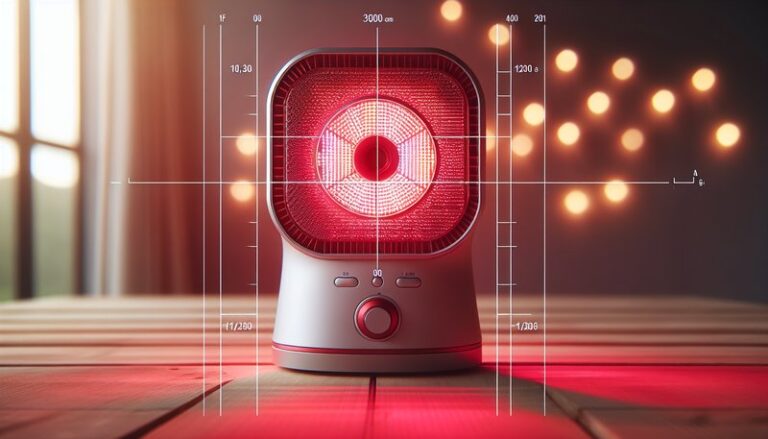Does Red Light Therapy Reduce Inflammation?
Does Red Light Therapy Reduce Inflammation?
Can light really heal? The idea may seem far-fetched, but red light therapy (RLT) is gaining traction as a promising treatment for inflammation and a variety of other conditions. This article explores the science behind RLT, its benefits in reducing inflammation, and other essential considerations for those considering this therapy.
Red light therapy is an innovative and non-invasive technology harnessed for its potential therapeutic effects. In the following sections, we will delve into what RLT is, its benefits, practical considerations, alternative treatments, and whether it’s recommended for reducing inflammation.
Key Takeaways
- Red light therapy utilizes specific wavelengths of light to stimulate cellular processes and reduce inflammation.
- Numerous studies suggest that RLT can help alleviate various inflammatory conditions, such as arthritis and skin issues.
- Although promising, it is essential to weigh its advantages and disadvantages before diving into treatment.
What is Red Light Therapy?
Red light therapy is a form of low-level laser therapy (LLLT) that uses light between 600 to 1,100 nanometers in wavelength to penetrate the skin and stimulate cellular functions. Unlike ultraviolet (UV) light, red light is not damaging and is considered safe for human use.
It works by promoting photobiomodulation, a process that occurs when light energy is absorbed by the body’s cells. This process can lead to improved mitochondrial function, increased adenosine triphosphate (ATP) production, and enhanced circulation, all of which are vital for healing and reducing inflammation.
Mechanism of Action
When red light penetrates the skin, it can influence the metabolic processes of cells, particularly inflammatory cells. As a result, RLT can modulate the immune response, increase collagen production, and reduce oxidative stress, all contributing to decreased inflammation and faster healing.
For more information, read Does Red Light Therapy Aid Nerve Damage?
What are the Benefits of Red Light Therapy?
Exploring the advantages of red light therapy reveals various ways it may help alleviate inflammation and improve overall health and wellness.
Reduced Inflammation
Numerous studies support the effectiveness of RLT in reducing inflammation. For instance, it has been found beneficial for patients dealing with chronic inflammatory conditions such as rheumatoid arthritis, where it can help reduce pain and stiffness.
Pain Relief
In addition to inflammation reduction, RLT has shown promise in alleviating pain. Many users report less discomfort in conditions like back pain, joint pain, and muscle soreness after regular sessions, making it a potential adjunct therapy for pain management.
Enhanced Wound Healing
Various research indicates improved wound healing with RLT due to increased circulation and cellular repair processes. This benefit extends to injuries that may otherwise heal slowly due to underlying inflammation.
Skin Health Improvement
For those with skin conditions characterized by inflammation, such as acne or psoriasis, red light therapy can improve skin appearance and reduce flare-ups. Regular treatments can support skin healing by reducing redness and promoting a more radiant complexion.
Is it Possible to Use Red Light Therapy for Inflammation?
Yes, using red light therapy for inflammation is not only possible, but it is also increasingly supported by scientific evidence. Medical professionals recommend it for various inflammatory conditions, but understanding its application is crucial to reaping its benefits.
What are the Advantages of Red Light Therapy?
-
Non-Invasive: RLT offers a pain-free, non-invasive treatment option for inflammation. There are no needles or drugs involved, reducing the risk of side effects.
-
Accessibility: With the advent of at-home devices, individuals can use RLT conveniently without requiring frequent visits to a clinic.
-
Versatility: Red light therapy can be utilized for various conditions, from joint pain to skin inflammation, making it a versatile treatment option.
What are the Disadvantages of Red Light Therapy?
-
Time Commitment: Regular sessions are often necessary to achieve noticeable effects, which can be a challenge for individuals with busy schedules.
-
Potential High Costs: While some at-home devices are affordable, professional treatments can be pricey, leading to a significant investment for those pursuing this therapy.
-
Varied Results: Efficacy can vary from person to person, with some individuals experiencing minimal effects, making it less predictable than traditional treatments.
What are the Things to Consider Before Trying Red Light Therapy?
Before embarking on a red light therapy regimen, it’s important to consider specific factors to ensure its effectiveness and safety.
Consult a Healthcare Professional
It’s vital to consult with a healthcare provider, especially if you have existing health conditions or are pregnant. They can help determine if RLT is suitable for your needs and conditions.
Quality of Equipment
Not all red light devices are created equal. Research reputable brands or consult professionals to ensure that the equipment used provides optimal wavelengths for effective therapy.
Consistency is Key
To achieve the best results, adherence to a consistent treatment schedule is necessary. Being aware of the time commitment and plan appropriately can enhance treatment outcomes.
What are the Alternatives to Red Light Therapy?
Several alternative treatments target inflammation and may be suitable for individuals who want to explore options beyond RLT.
Cold Therapy
Utilizing ice packs or cold compresses can effectively alleviate inflammation and pain in acute injuries. Cold therapy reduces blood flow to an area, minimizing swelling.
Physical Therapy
Working with a physical therapist can address inflammation through targeted exercises, manual therapy, and modalities such as ultrasound or electrical stimulation.
Anti-Inflammatory Diet
Incorporating a balanced, anti-inflammatory diet rich in omega-3 fatty acids, fruits, and vegetables can contribute to overall inflammation reduction. Foods like salmon, walnuts, and leafy greens are particularly beneficial.
Medications
Over-the-counter nonsteroidal anti-inflammatory drugs (NSAIDs) such as ibuprofen or prescription medications can provide considerable relief from inflammation-related pain for many individuals.
Conclusion: Is it Recommended to Try Red Light Therapy?
Red light therapy presents a promising option for reducing inflammation, backed by an increasing body of research. While it offers several advantages, it’s essential to consider individual needs, commitment levels, and possible alternatives. Consulting with a healthcare provider can provide personalized guidance, making it easier to make informed and beneficial health decisions.
Frequently Asked Questions
What conditions can red light therapy treat?
RLT can treat various conditions, including arthritis, muscle pain, joint injuries, acne, and skin inflammation.
Learn the background in Best Time for Red Light Therapy?
How often should I do red light therapy?
Typically, for optimal results, RLT sessions are recommended two to three times per week, but this can vary based on individual needs and the severity of the condition.
Is red light therapy safe?
Yes, red light therapy is considered safe for most individuals. It’s non-invasive, and there are few side effects, primarily limited to mild redness or warmth in treated areas.
Do I need to see a professional for RLT?
While professional treatments are available, many effective at-home devices exist, enabling individuals to undertake RLT independently after a consultation with a healthcare professional to devise an appropriate plan.
Can I combine red light therapy with other treatments?
Yes, RLT can be effectively combined with other treatments, such as physical therapy or medications, but always consult with a healthcare provider to ensure safe and effective integration.






